Field Trips
Field trips will take place for at least 25 participants (maximum 40, on the first come first served basis)
Pre- conference field trips
Field trip 1: From Cadomian accretion to Variscan collision: a crustal-scale traverse across the northwestern Teplá–Barrandian unit
Leaders: J. Žák, G. Zulauf, W. Dörr, J. Hajná, K. Verner
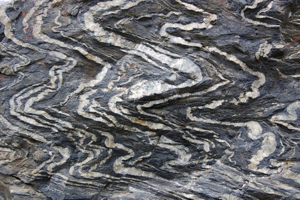 A spectacular section through a Cadomian accretionary wedge heterogeneously overprinted by Variscan orogenic deformation is superbly exposed in the northwestern Teplá–Barrandian unit. The pre-conference field trip will start off by exploring deformed Cadomian sedimentary successions, including Neoproterozoic to early Cambrian accretionary mélanges that contain ocean-floor inclusions mixed with arc-derived sedimentary matrix. We will then cross a presumably Late Devonian transpressional shear zone that thrusts the higher grade northwestern portion of the Teplá–Barrandian unit severely reworked by Variscan deformation over the low grade Cadomian basement. After examining Cambrian and Late Devonian granitoid plutons near the shear zone, the field trip will finish up in the northwesterly amphibolite facies, kyanite-bearing rocks exhumed during early Variscan convergence.
A spectacular section through a Cadomian accretionary wedge heterogeneously overprinted by Variscan orogenic deformation is superbly exposed in the northwestern Teplá–Barrandian unit. The pre-conference field trip will start off by exploring deformed Cadomian sedimentary successions, including Neoproterozoic to early Cambrian accretionary mélanges that contain ocean-floor inclusions mixed with arc-derived sedimentary matrix. We will then cross a presumably Late Devonian transpressional shear zone that thrusts the higher grade northwestern portion of the Teplá–Barrandian unit severely reworked by Variscan deformation over the low grade Cadomian basement. After examining Cambrian and Late Devonian granitoid plutons near the shear zone, the field trip will finish up in the northwesterly amphibolite facies, kyanite-bearing rocks exhumed during early Variscan convergence.
Field trip 2: Sedimentary and tectonic evolution of the Barrandian area
Leaders: O. Fatka, P. Budil, M. Mergl
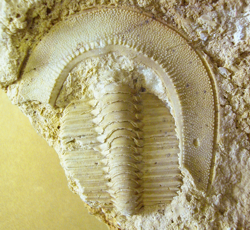 The only non-metamorphosed, weakly deformed, and almost complete Lower Palaeozoic succession in the Bohemian Massif is preserved in the Barrandian area of the Teplá–Barrandian unit. The Barrandian area is composed of sedimentary and volcanic complexes of four superimposed basins, each of them representing a distinct tectonostratigraphic megacycle – Precambrian, Cambrian (with two separate basins) and Ordovician–Middle Devonian. During the Variscan Orogeny, the Lower Palaeozoic sequences of the Barrandian area together with their Precambrian basement were folded, faulted, uplifted, and then eroded. Our field trip will start at the Neoproterozoic–Cambrian unconformity in the Skryje–Týřovice area, we will then visit several important Cambrian to Devonian outcrops, including the first GSSP at Klonk near Suchomasty.
The only non-metamorphosed, weakly deformed, and almost complete Lower Palaeozoic succession in the Bohemian Massif is preserved in the Barrandian area of the Teplá–Barrandian unit. The Barrandian area is composed of sedimentary and volcanic complexes of four superimposed basins, each of them representing a distinct tectonostratigraphic megacycle – Precambrian, Cambrian (with two separate basins) and Ordovician–Middle Devonian. During the Variscan Orogeny, the Lower Palaeozoic sequences of the Barrandian area together with their Precambrian basement were folded, faulted, uplifted, and then eroded. Our field trip will start at the Neoproterozoic–Cambrian unconformity in the Skryje–Týřovice area, we will then visit several important Cambrian to Devonian outcrops, including the first GSSP at Klonk near Suchomasty.
Post-conference field trip
Field trip 3: Late Variscan continental basins in western Bohemia: tectono-sedimentary, climatic, and biotic archives
Leaders: S. Opluštil, R. Lojka, J. Pšenička
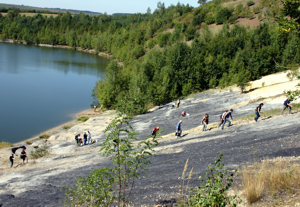 Late Paleozoic continental basins in western and central Bohemia represent sedimentary archives of climatic and related biotic changes ranging from early Moscovian to late Gzhelian and possibly to early Asselian times. Provenance of their clastic sediments records exhumation history of the surrounding Variscan basement and rapid uplift of the Moldanubian unit. The post-conference field trip will provide a transect across most of the basin stratigraphy examined in a series of exposures. It will start by exploring basal early middle Moscovian coal-bearing strata exposed in abandoned opencast mines in the Radnice Basin northeast of Pilsen, including intercalated volcaniclastic rocks that preserve in situ buried peat-forming vegetation. Late Moscovian to early Kasimovian and dominantly fluvial strata recording a transition from perhumid to seasonally dry climate will be examined in exposures and quarries in central and northern part of the Pilsen Basin. After examining Late Kasimovian strata, the field trip will finish with exploring fluvial red beds and intercalated paleosols of the late Gzhelian age.
Late Paleozoic continental basins in western and central Bohemia represent sedimentary archives of climatic and related biotic changes ranging from early Moscovian to late Gzhelian and possibly to early Asselian times. Provenance of their clastic sediments records exhumation history of the surrounding Variscan basement and rapid uplift of the Moldanubian unit. The post-conference field trip will provide a transect across most of the basin stratigraphy examined in a series of exposures. It will start by exploring basal early middle Moscovian coal-bearing strata exposed in abandoned opencast mines in the Radnice Basin northeast of Pilsen, including intercalated volcaniclastic rocks that preserve in situ buried peat-forming vegetation. Late Moscovian to early Kasimovian and dominantly fluvial strata recording a transition from perhumid to seasonally dry climate will be examined in exposures and quarries in central and northern part of the Pilsen Basin. After examining Late Kasimovian strata, the field trip will finish with exploring fluvial red beds and intercalated paleosols of the late Gzhelian age.
Syn-conference beer trip
In case of interest (at least 10 participants, maximum 50), we are pleased to organize a tour to the Pilsner Urquell brewery with possible informal continuation of the tour in the traditional brewery pub "Na Spilce"
.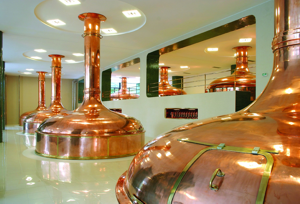
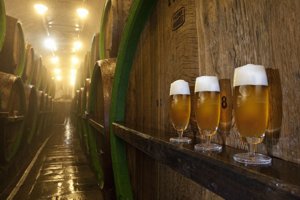
For more info on brewery tour please check here.
email: jirizak(at)natur.cuni.cz, g.zulauf(at)em.uni-frankfurt.de
Webhosting provided by 1&1 Internet AG.